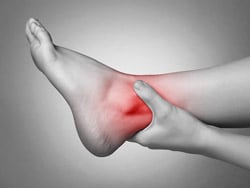The Wrong Therapy for Sprains and Strains?
Every now and then, a patient hobbles into the physical therapy offices of Eric Robertson, PT, DPT, still wearing a walking boot weeks after spraining an ankle.
"We kind of cringe," says Robertson, a spokesperson for the American Physical Therapy Association and an Assistant Professor of Physical Therapy at Regis University in Denver, Colorado.

Patients should start moving most sprained and strained joints soon after the injury, yet many doctors go too far in applying the "rest" part of the traditional prescription of rest, ice, compression, and elevation (RICE), says Robertson. "This RICE construct doesn't necessarily reflect modern science."
RICE appears all over the Internet and in self-care books and pamphlets -- wherever you can find advice about sprains and strains, including the Websites of the American Academy of Orthopaedic Surgeons (AAOS)[1] and the American College of Sports Medicine (ACSM).[2]
But the formula derives more from educated guessing than actual research. In recent years, a movement has grown to replace it with a more evidence-based approach. Even some defenders of RICE, such as AAOS spokesperson Barbara Bergin, MD, say RICE is not meant as a clinical guideline but more as a first-aid recommendation for laypeople.
A Problem That Affects Thousands of Patients
Sprains and strains may seem like a trivial problem. After all, they don't kill anyone and usually heal without much intervention. But in the United States alone, some 28,000 ankle injuries occur every day.[3] A recent systematic review in the American Journal of Medicine showed that only 35%-85% of sprained ankles heal in 3 years.[4]
Such statistics have focused increasing attention on therapy for sprains. A 2012 editorial published in the British Journal of Sports Medicine called for replacement of RICE with a different set of guidelines: protection, optimal loading, ice, compression, and elevation (POLICE).[5]
"Rest should be of limited duration and restricted to immediately after trauma," the authors wrote. "Longer periods of unloading are harmful and produce adverse changes to tissue biomechanics and morphology."
In 2013, the National Athletic Trainers Association (NATA) published some of the first official guidelines anywhere for ankle sprains.[6] Researchers for the organization spent 6 years combing through the literature and assigning letter grades from "A" to "C," from best to worst quality of the evidence behind each possible therapy.
Most elements of RICE got a "C," yet lead author Thomas W. Kaminski, PhD, ATC, believes that many practitioners are still following the prescription too closely.
"I wish I could say that what we found is what is really being done in a clinical setting," says Kaminski, Professor of Kinesiology and Applied Physiology at the University of Delaware in Newark. "That's probably not the case."
Medscape Orthopedics © 2014 WebMD, LLC
Cite this: Should POLICE Replace RICE as the Ankle Therapy of Choice? - Medscape - Apr 09, 2014.











Comments